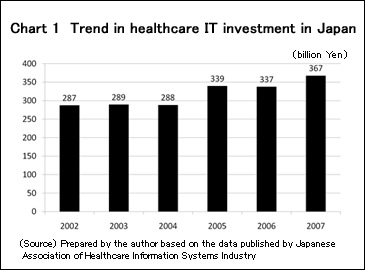Column Finance and the Social Security System 2009.08.05
Prerequisites for realizing EHR system in Japan
On July 6, the Japanese Government's IT Strategic Headquarters announced the "i-Japan Strategy 2015". Along with the areas of "e-government and e-municipality" and "education and human resources", the strategy has identified "healthcare and medicine" as a top priority area and set a goal of constructing a Japanese version of the Electronic Health Record (EHR) system by 2015. The system is intended to reduce medical malpractice, establish lifetime electronic medical and prescription records for individual patients and facilitate epidemiological use of anonymized healthcare data. The EHR system is to be built upon Electronic Medical Record (EMR) systems adopted by individual medical institutions, but the rate at which EMR systems have penetrated in Japan has been slow. Thus, our first step toward the establishment of the Japanese EHR system would be to eliminate the barriers hindering the penetration of EMR systems.
EMR is a system for storing medical records within a medical institution in order to improve work efficiency and the quality of medical services. Medical institutions store these records by using medical information technologies such as electronic patient files. EHR is a system that collects such records from various institutions and anonymizes them so that they can be shared among institutions. Thus, well-organized EMR systems are prerequisite infrastructures for the establishment of an EHR system.
In the Grand Design for Medical IT Application announced in 2001, the Government declared that 60% of hospitals with more than 400 beds and 60% of clinics should adopt the use of electronic patient files by 2006; however, only 32.3% of hospitals with more than 400 beds and 8.5% of clinics have actually implemented the system, falling far short of the targets. The low adoption rates indicate that Japan has not yet established the EMR infrastructure necessary for the EHR system.

Chart 1 shows the domestic trend in healthcare IT investment, which is relevant to EMR establishment. Although the level of investment has been gradually increasing, the figure for FY 2007 was 367 billion yen, representing a mere 1.1% of national medical expenditure. In the U.S., where the construction of EHR is making steady progress, standard medical institutions invest 2.5-3% of their revenues in healthcare IT, and some institutions even devote over 5% of their revenues to this area. In order to emulate the success of the U.S., Japan needs effective policies in order to double investment in healthcare IT.
This doubling of investment cannot be achieved by simply incorporating the required financial resources into medical fees. Regarding healthcare IT investment, the financial burden is largely imposed on acute hospitals while the financial benefit goes to other institutions sharing the patient records. In the situation where individual institutions are run separately, acute hospitals see little incentive to continue making investments. In order to encourage healthcare IT investment in Japan, we need to facilitate the establishment of integrated healthcare entities, i.e. the integration of acute hospitals with other medical institutions.
